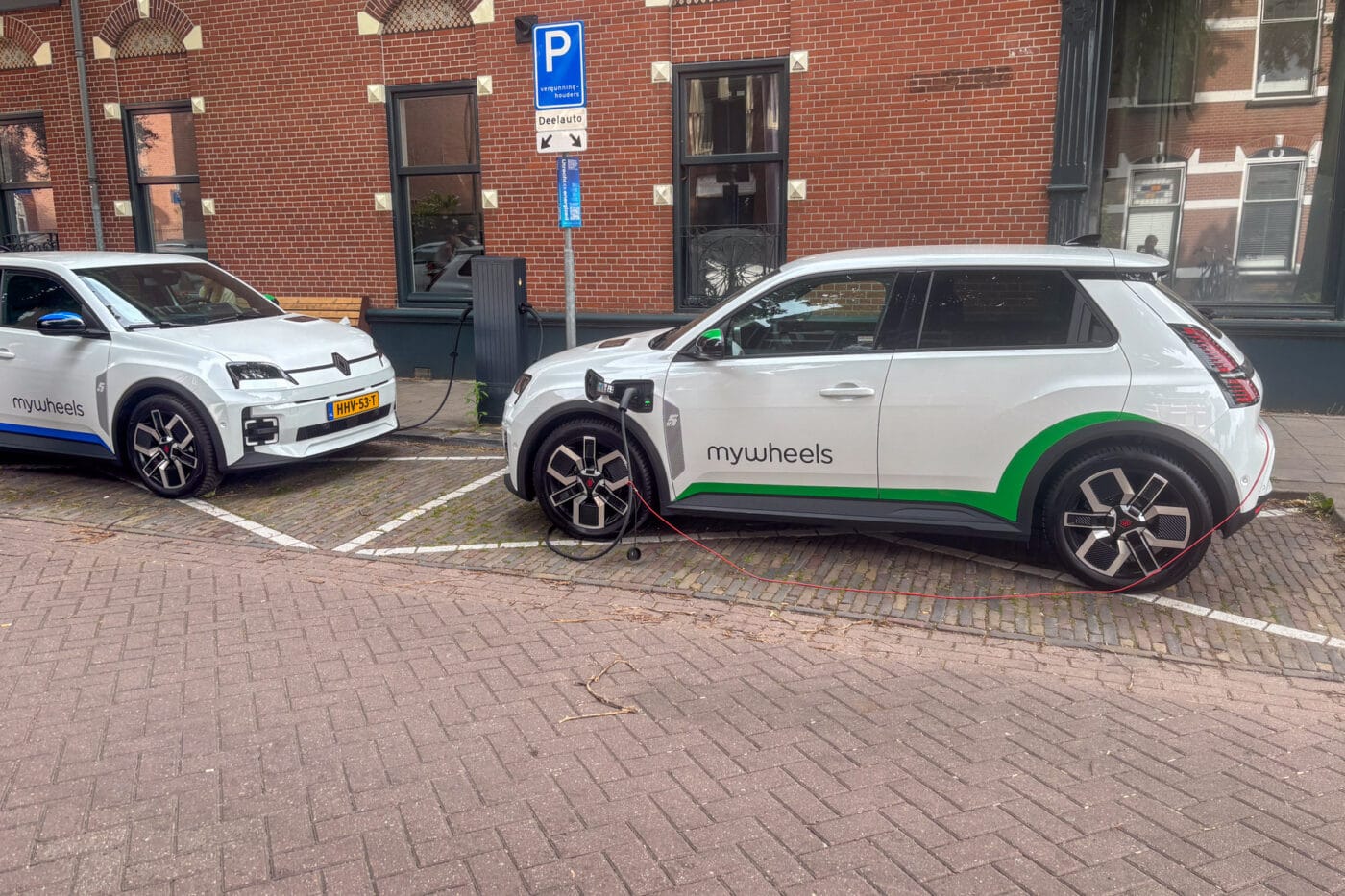
‘Utrecht Energized’ launched: How bidirectional charging is set to make the breakthrough
It looks like an ordinary public charge point on Jan Pieterszoon Coenstraat near the centre of Utrecht: The two white Renault 5s from carsharing provider MyWheels immediately stand out but don’t seem particularly special at first glance. Charging bays reserved for car-sharing vehicles exist in other countries as well, and Utrecht is full of such bays for its widely used ‘deelautos’. A small detail that may go unnoticed by the untrained eye sets this particular charging station and the two electric Renaults apart: the animation of the status LEDs on the column moves counter-clockwise. Not clockwise.
“I asked our engineers to come up with something. It had to be subtle but still visible,” explains Robin Berg. The Dutchman is head of We Drive Solar and not only installed the charging post in the Lombok-West district but also developed it with his team. The small status LED above the charging port provides a discreet but effective way to visually indicate the unique capability of the otherwise inconspicuous grey post.
The blue LED shows that the vehicle is currently charging. The more important white LED beneath – surrounded by symbolic sunbeams – signals the direction of energy flow: if the animation spins clockwise, the car is being charged from the grid. If it spins counter-clockwise, electricity is flowing from the Renault 5’s battery back into Utrecht’s grid.
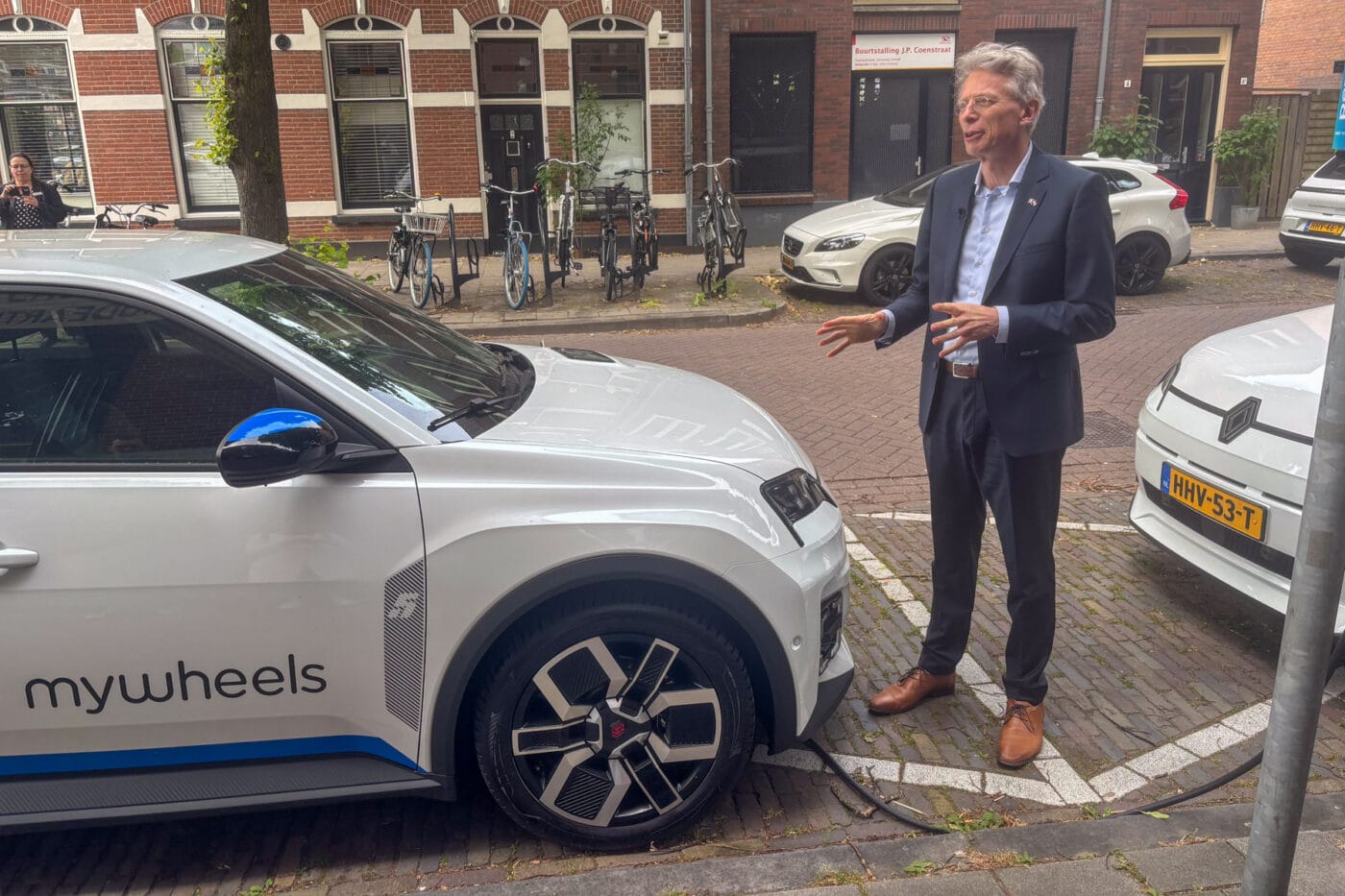
That bidirectional charging works has been demonstrated by countless pilot projects over the years – most recently, Vattenfall and Volkswagen launched a field trial in Sweden with 200 vehicles, using charging hardware supplied by the German company Ambibox. However, the charge point on Jan Pieterszoon Coenstraat is not a one-off pilot installation – it is one of 50 that have recently been rolled out across the city. If Robin Berg had his way, Utrecht would be where bidirectional charging moves beyond the niche. Backed by We Drive Solar, MyWheels, Renault and Mobilize, he is driving a project that aims to be the breakthrough.
For bidirectional charging, the launch of ‘Utrecht Energized’ marks a genuine first: it is the first fully operational vehicle-to-grid (V2G) ecosystem in a European city. It is expected to support the grid at a meaningful scale – and since it involves electric car-sharing vehicles, it also offers a clean mobility solution.
Starting with 50 EVs and 50 charging points
“We’re moving from small-scale tests and pilot schemes to large-scale deployment,” Berg stated at the official launch event for “Utrecht Energized”, speaking to an audience of 350 guests. And scaling up is essential to fully realise the technology’s potential: “One car might be enough for a neighbourhood. But not to stabilise the grid. For that, we need many cars.”
And many cars are coming: ‘Utrecht Energized’ is set to grow to up to 500 electric vehicles. To make that happen, all partners have pooled their experience from various pilot projects to create a custom-tailored system for this Dutch city – everything has to interoperate seamlessly, from the vehicle to the charge point, from the booking system to integration with the energy market and real-time electricity prices. In this case, the latter is managed by Energyzero. The project also had to clear permits and certification hurdles with the city, grid operators and others.
“Bidirectional charging is complex, but today we’re showing that it works,” said Berg at the launch event. There were no dissenting voices in the room – most of the attendees at the Jaarbeurs conference centre were partners or stakeholders in the project. And as Berg puts it, it is complicated. More on that later.
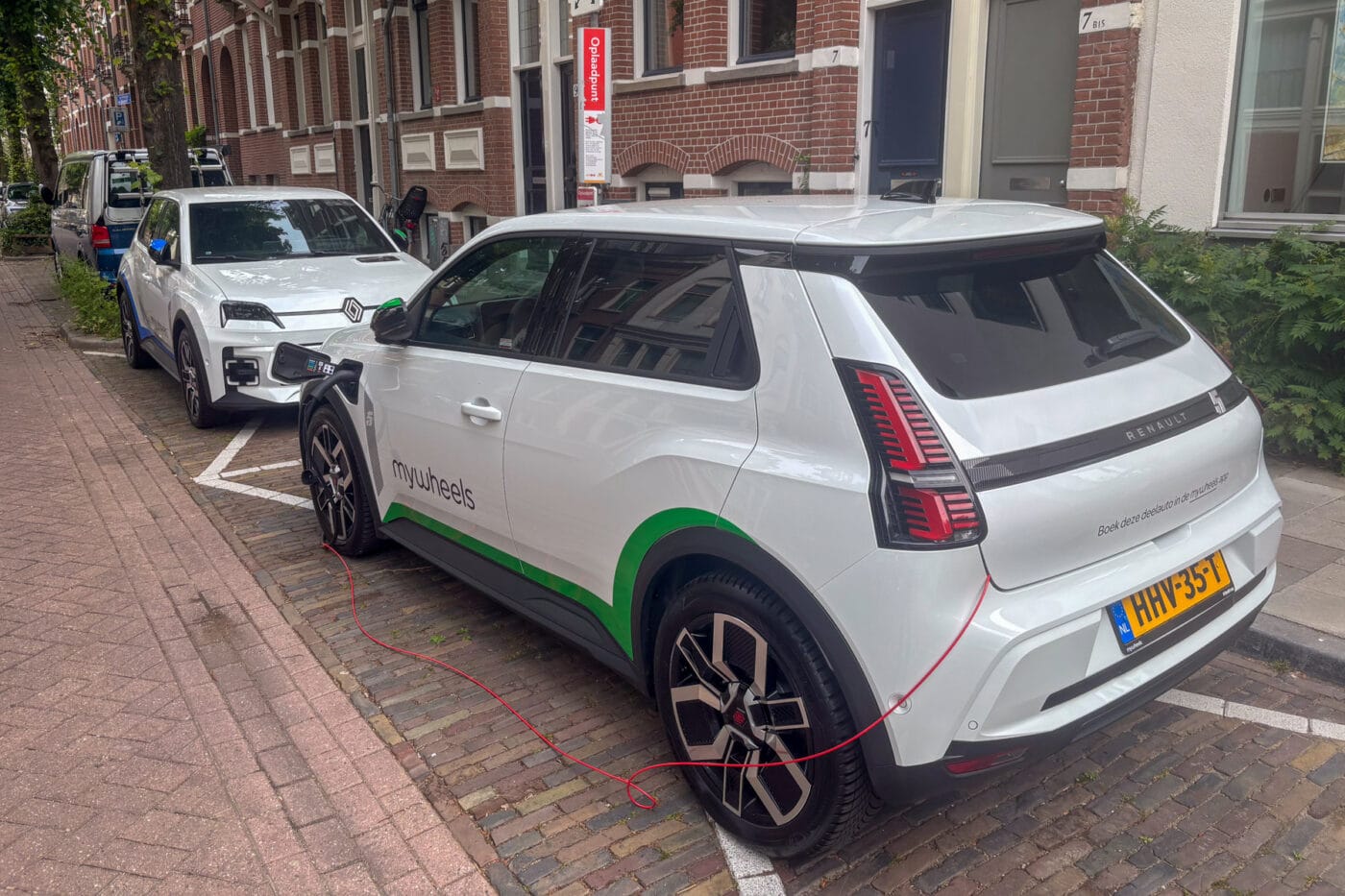
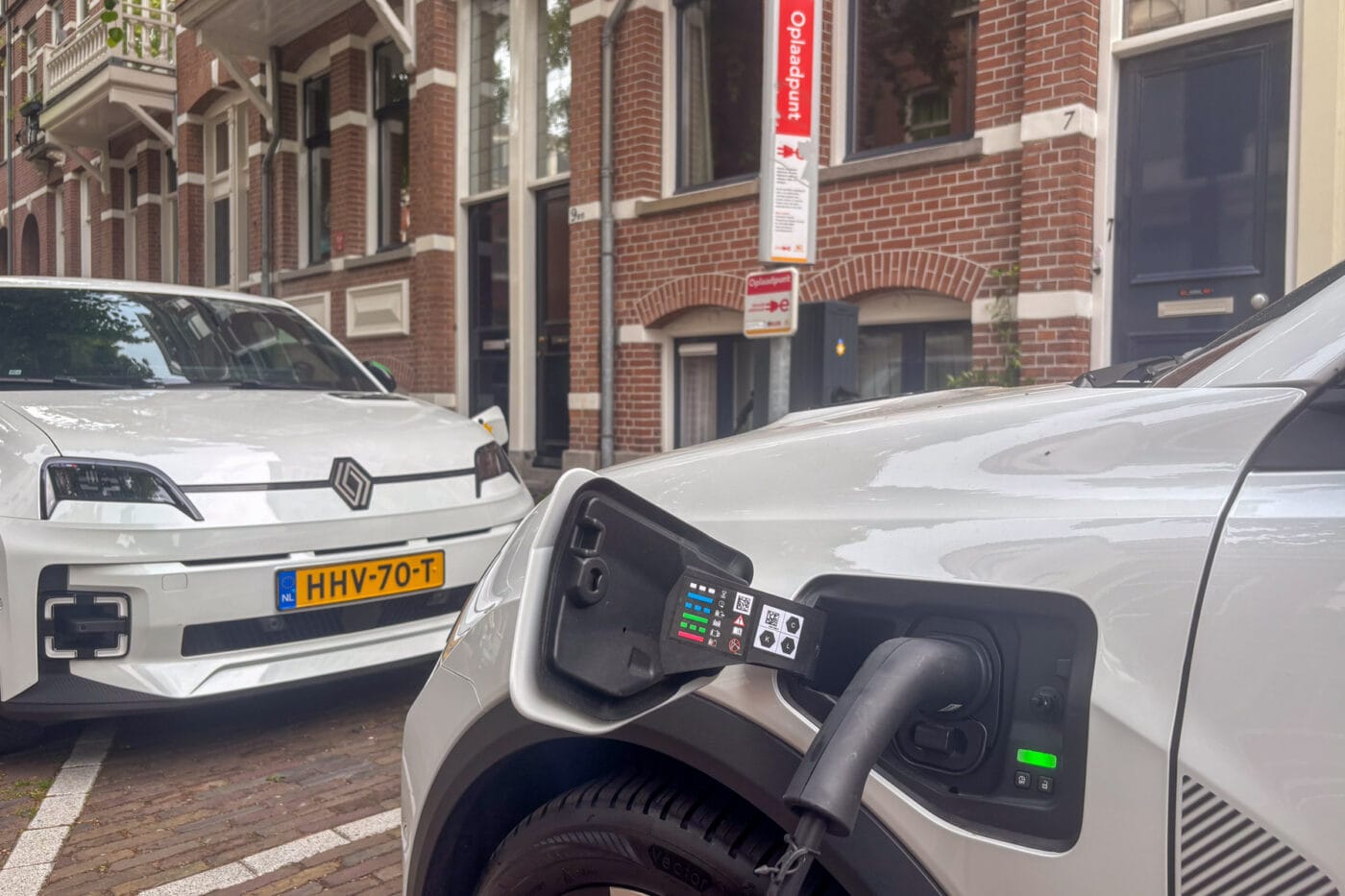
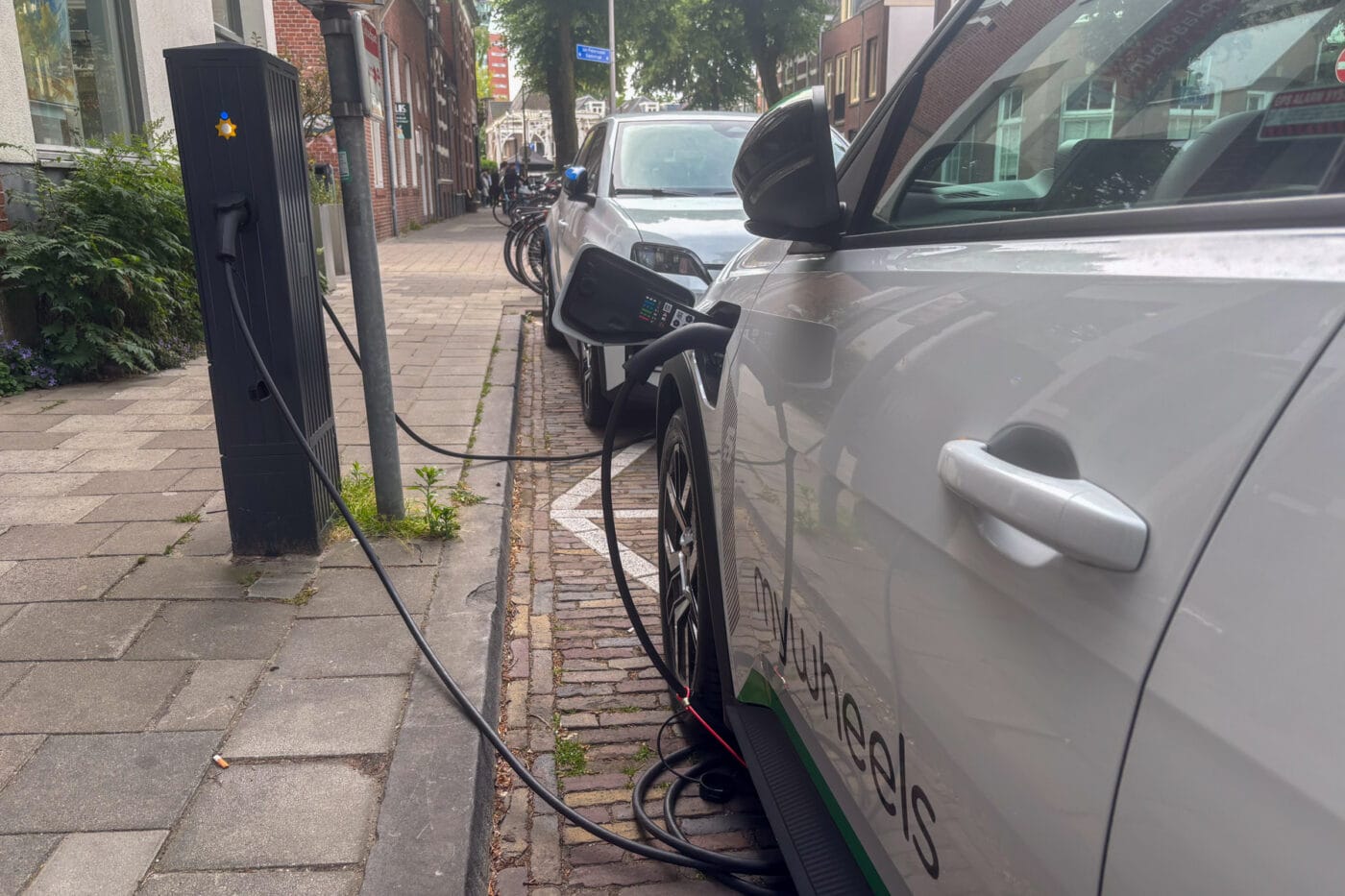
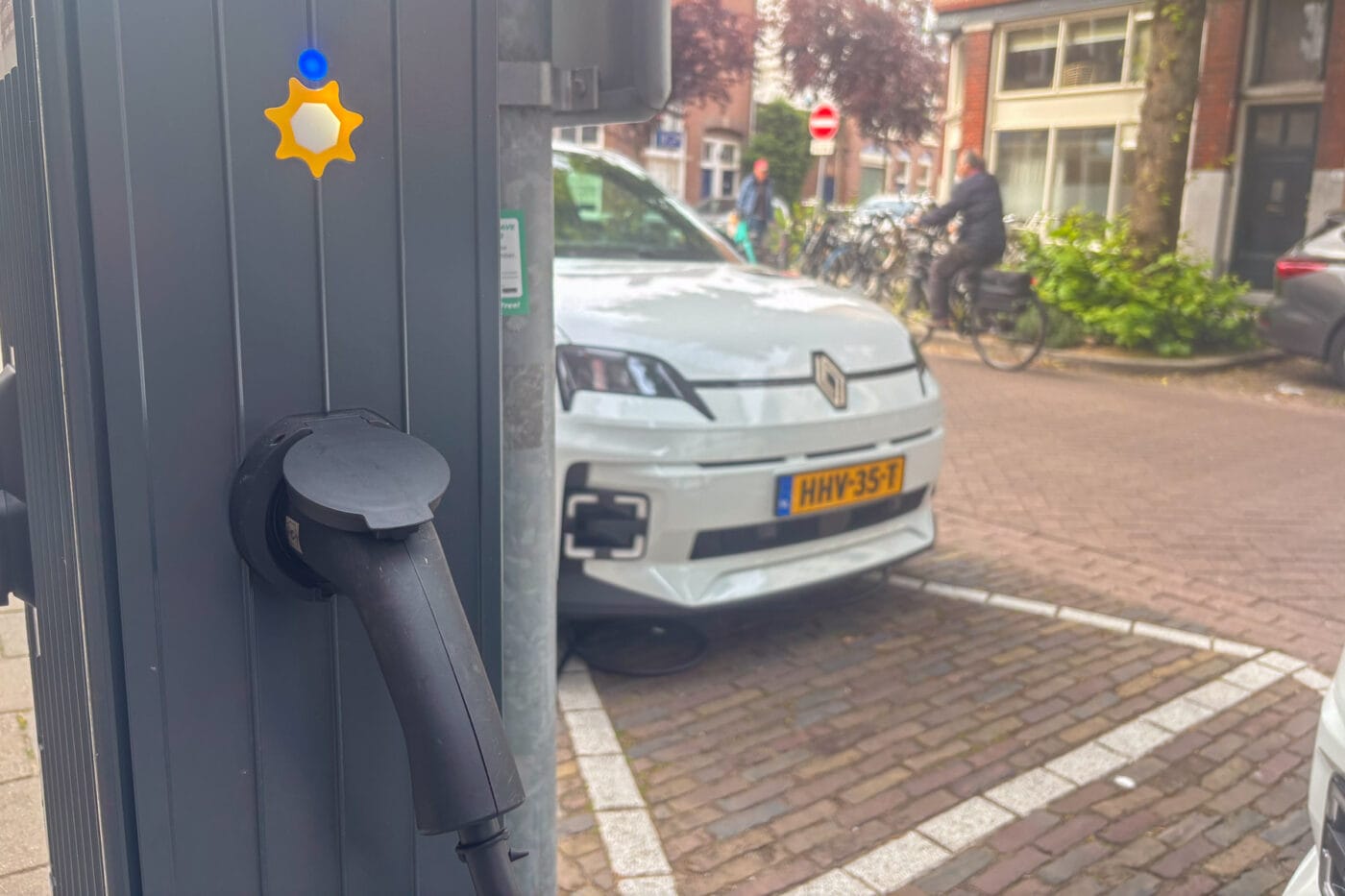
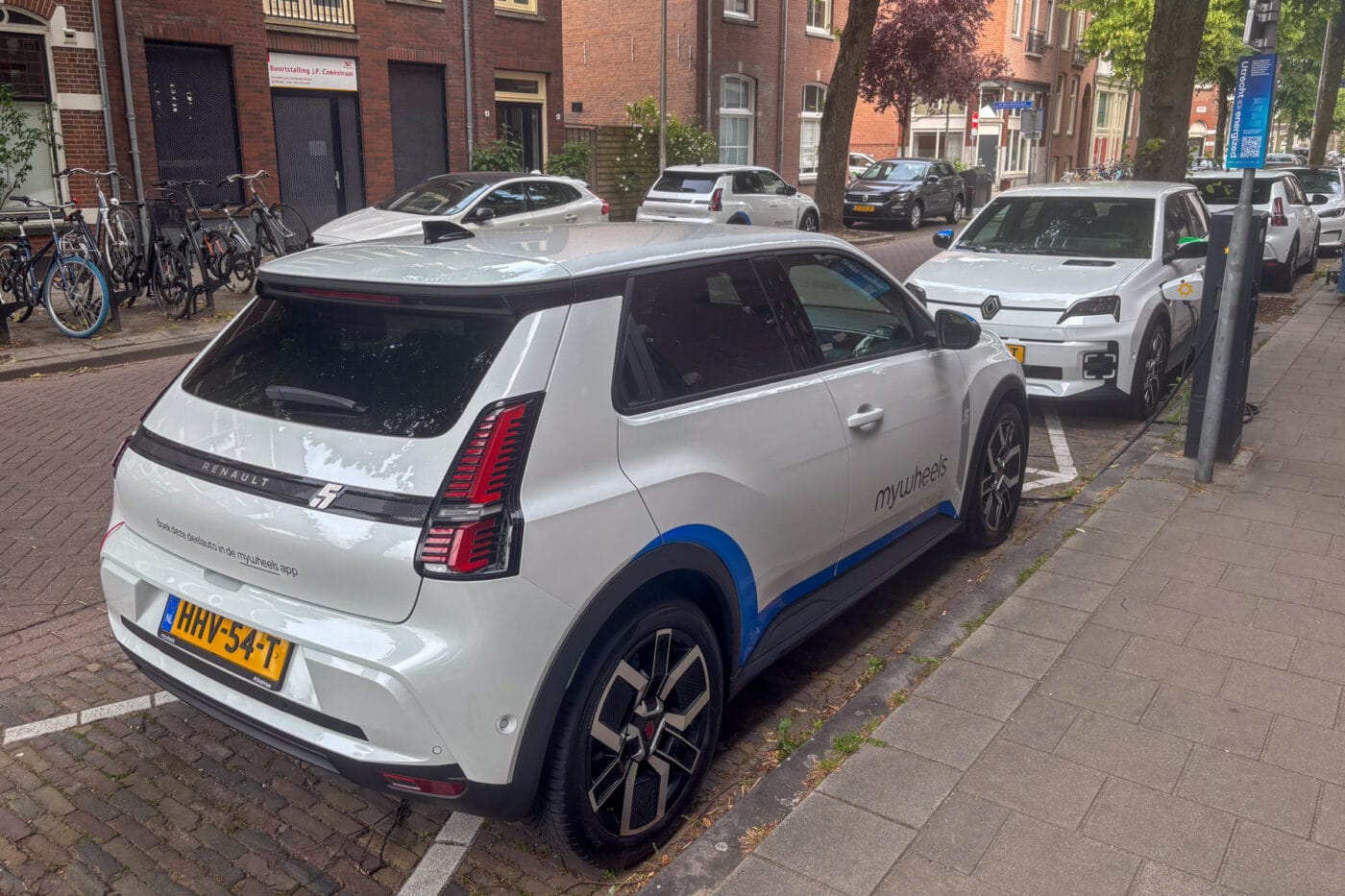
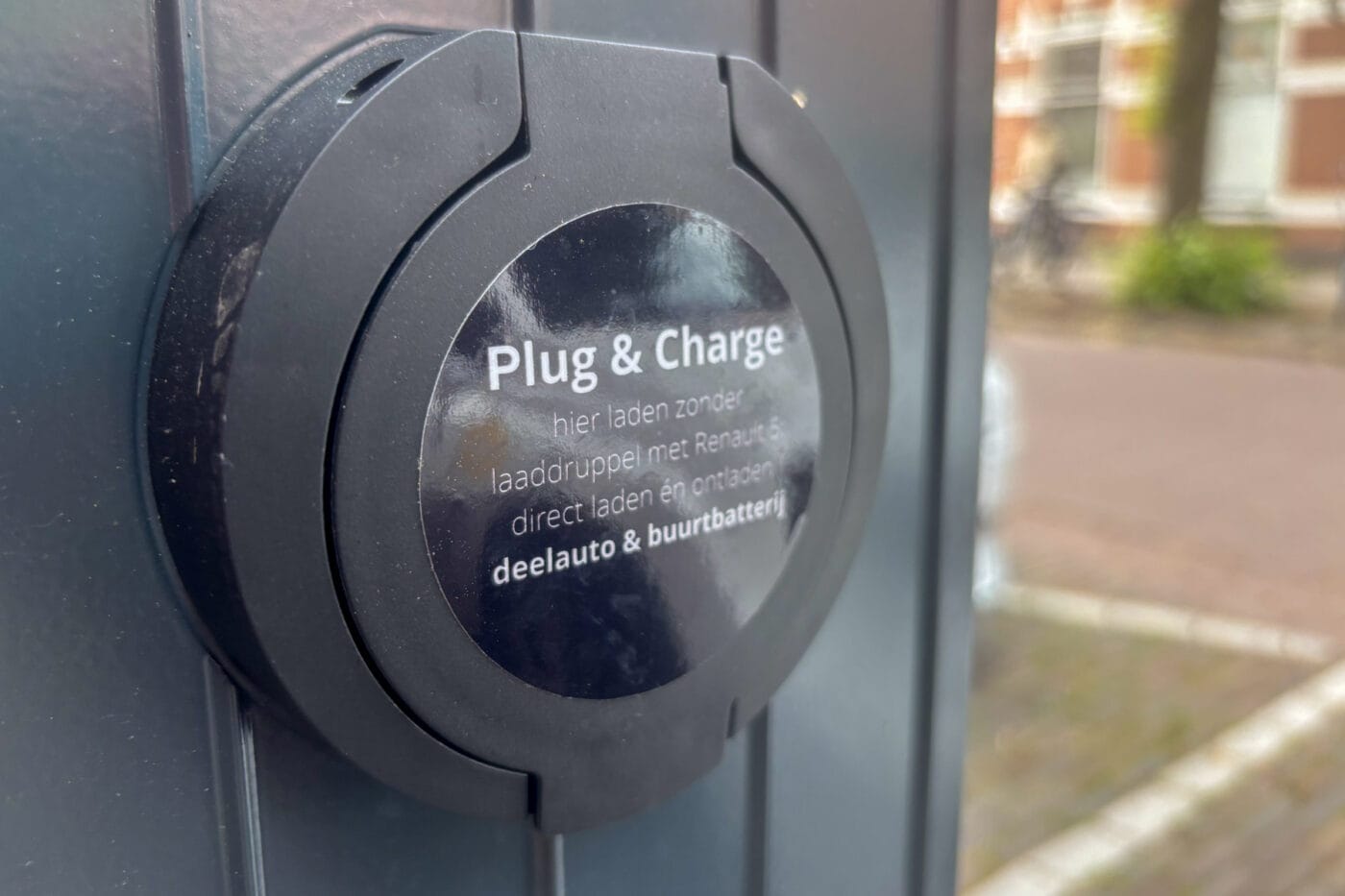
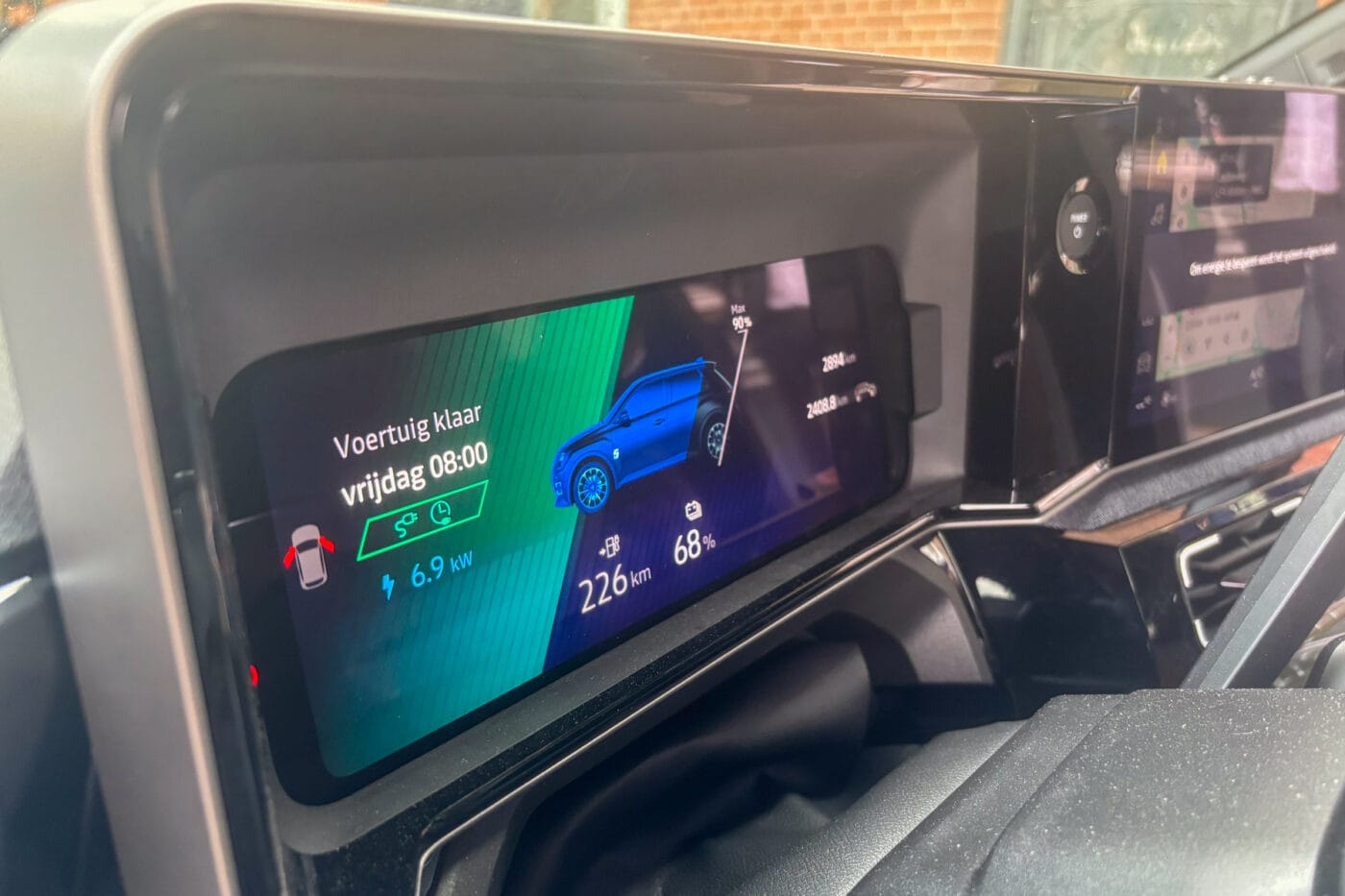
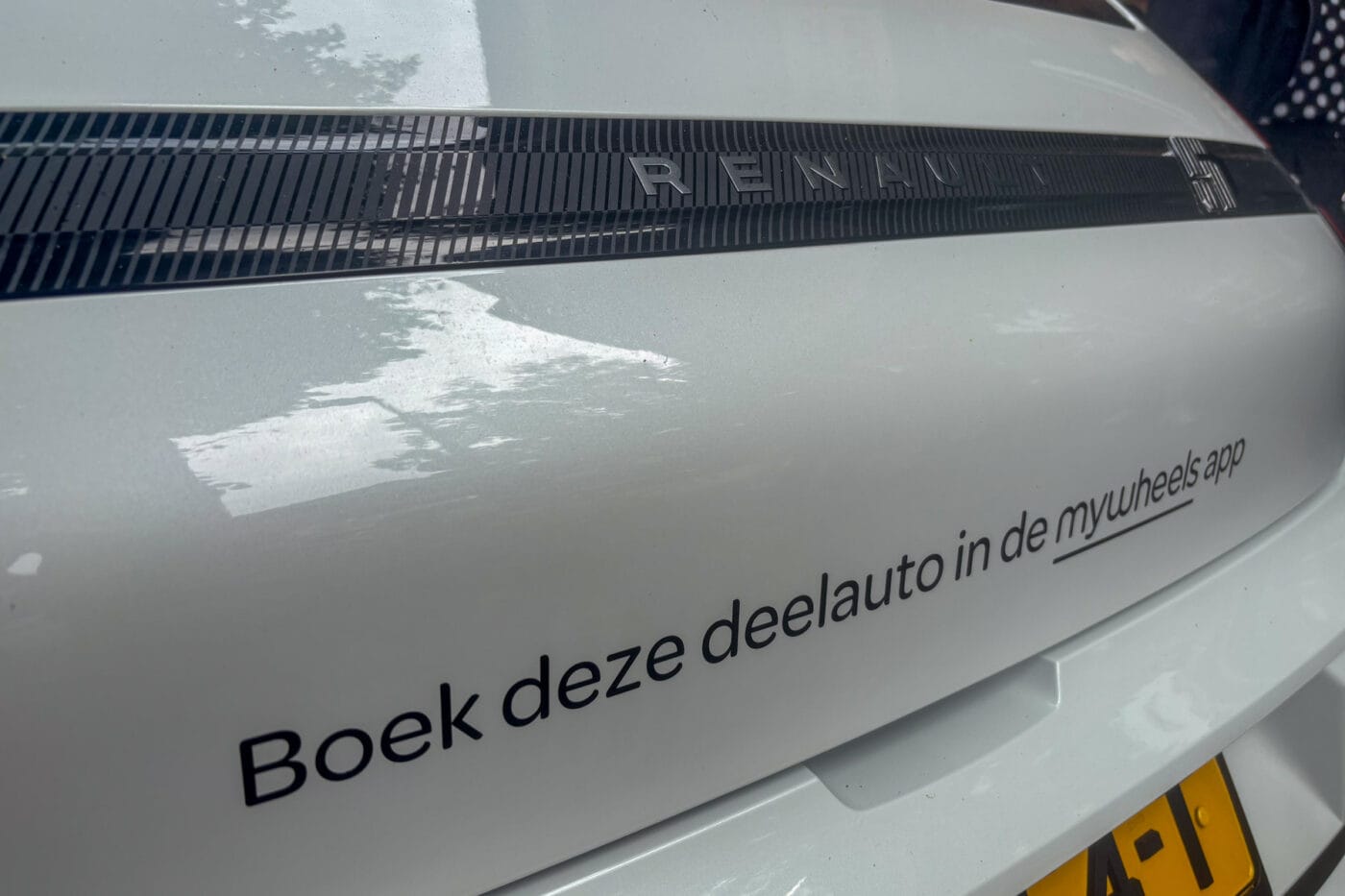
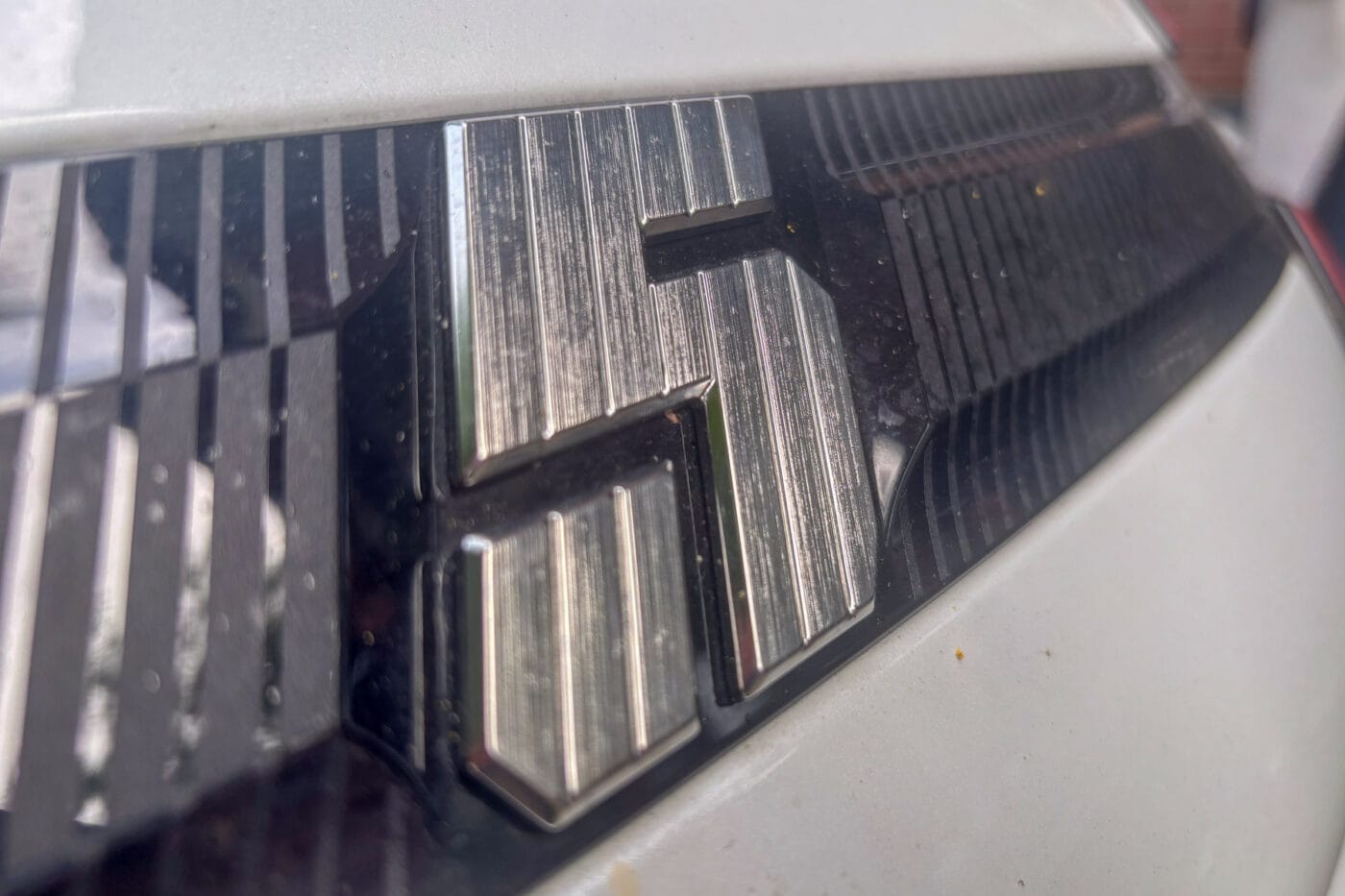
In recent weeks, We Drive Solar and partner MyWheels installed the first 50 bidirectional charge points and integrated 50 Renault 5 E-Tech Electric vans into the MyWheels fleet. These vehicles – or more specifically, their onboard AC chargers – are factory-equipped for bidirectional charging. The goal is to scale up to 500 such electric Renaults in Utrecht.
In addition to the Renault 5 and its sibling Renault 4, Renault will also supply MyWheels with the Mégane E-Tech and Scénic E-Tech, both featuring the new bidirectional charger. This enables MyWheels to serve customers needing something larger than the retro-style supermini. We Drive Solar will roll out further charging points in parallel.
However, the partnership between We Drive Solar and Renault goes back much further. For nearly a decade, Robin Berg and his company have been pursuing the vision of a bidirectional car-sharing fleet. That’s why We Drive Solar originally entered the carsharing market, notably using the Renault Zoe. But the fleet of up to 250 EVs has since been phased out, with We Drive Solar exiting carsharing to focus solely on bidirectional charging. MyWheels, a subsidiary of The Sharing Group, has taken on the car-sharing role in the project.
That Utrecht is the first city to launch a large-scale deployment isn’t just because Robin Berg has lived and worked there for years. The municipality has also played a pivotal role. Bidirectional charging also makes particular sense in Utrecht: according to project initiators, 35 per cent of the city’s rooftops are fitted with PV systems. When the sun shines, the grid is flooded with solar power, often more than can be consumed at that moment. By storing this in EV batteries, it can either be used for clean driving or fed back into the grid during the evening hours.
Utrecht is a front-runner in PV adoption, but solar energy is also highly popular across the Netherlands. “The Netherlands has the highest solar density per capita,” says Robin Berg, citing figures from May, when up to 26 gigawatts were generated on sunny days – with only 15 gigawatts of demand. “Germany and Belgium were pleased because we had to sell the surplus cheaply,” he adds. Storing this clean power locally for use in the evening or overnight would be far more sensible, Berg argues – not just in stationary batteries designed for balancing renewables, but in the EV batteries already present in cities. “It would be a shame not to tap into this potential,” he says.
That bidirectional charging is implemented with car-sharing vehicles might seem somewhat contradictory at first. After all, it is more profitable for the fleet operator when the cars are on the road as much as possible – only then do they generate income. At least, that’s the traditional way of thinking. The aim of this project, however, is to ensure that the cars can also earn money while parked – through bidirectional charging.
This ties in with the specific approach taken by MyWheels. The provider doesn’t primarily aim to facilitate short urban trips by car – most Dutch people already tend to cover those on foot or by bike. Instead, the shared cars are intended mainly for journeys out of the city. Although the Renault 5 has only been part of the Utrecht fleet for a few days, several vehicles have already been tracked in nearly all parts of the Netherlands, and one was even used for a trip all the way to Paris.
MyWheels’ pricing model reflects this. Short rental periods are relatively expensive, though of course still possible. The longer the rental period, the lower the cost – with special two-week offers available during holiday periods. This model is designed to appeal to those in Utrecht who still keep a private car parked somewhere in the neighbourhood, despite mostly cycling in their daily urban life. The goal is to encourage them to give up their private car entirely.
How bidirectional charging in Utrecht works
MyWheels operates a station-based car-sharing system – vehicles must be returned to the same charging point from which they were collected. This applies to both the bidirectional Renault 5s and the fleet’s non‑bidirectional EVs (Tesla Model 3/Y, Opel Corsa‑e, VW ID.3, Hyundai Kona Electric, Ioniq 5 and others). Thanks to the city partnership, the designated carsharing bays remain reserved, preventing them from being blocked by unauthorised vehicles.
For the Renault 5 users, bidirectional charging couldn’t be simpler: take the charging cable (secured by a red safety loop) from the boot, plug it into the car and connect it to the charging point – done. No card or app is needed.
“The protocol for bidirectional charging includes Plug & Charge,” explains Berg. For longer trips – like the ones to Paris – each MyWheels EV also carries a charging card on board. For standard use at the station, though, it isn’t required. Convenient!
Let’s imagine a Renault 5 returns around 5 p.m. after a day’s rental and is plugged in. From that moment, We Drive Solar’s system takes over the control of the process, interfacing closely with MyWheels’ booking backend. The vehicle has been booked for 10 a.m. the following morning, leaving the rest of the evening and night open for general use.
“So typically, we won’t charge immediately if electricity is expensive at that time,” Berg explains. But if a user has booked the car for 7 p.m., the system will begin charging straight away – regardless of price. If there’s no upcoming booking and the battery holds enough charge for potential spontaneous use, nothing happens.
When grid demand spikes in the early evening – people cooking, running washing machines or charging their own EVs – the We Drive Solar software may decide to feed electricity from the R5 battery back into the grid to stabilise it. On paper, if all 500 Renaults in the fleet are connected, We Drive Solar could make up to five megawatts of power available.
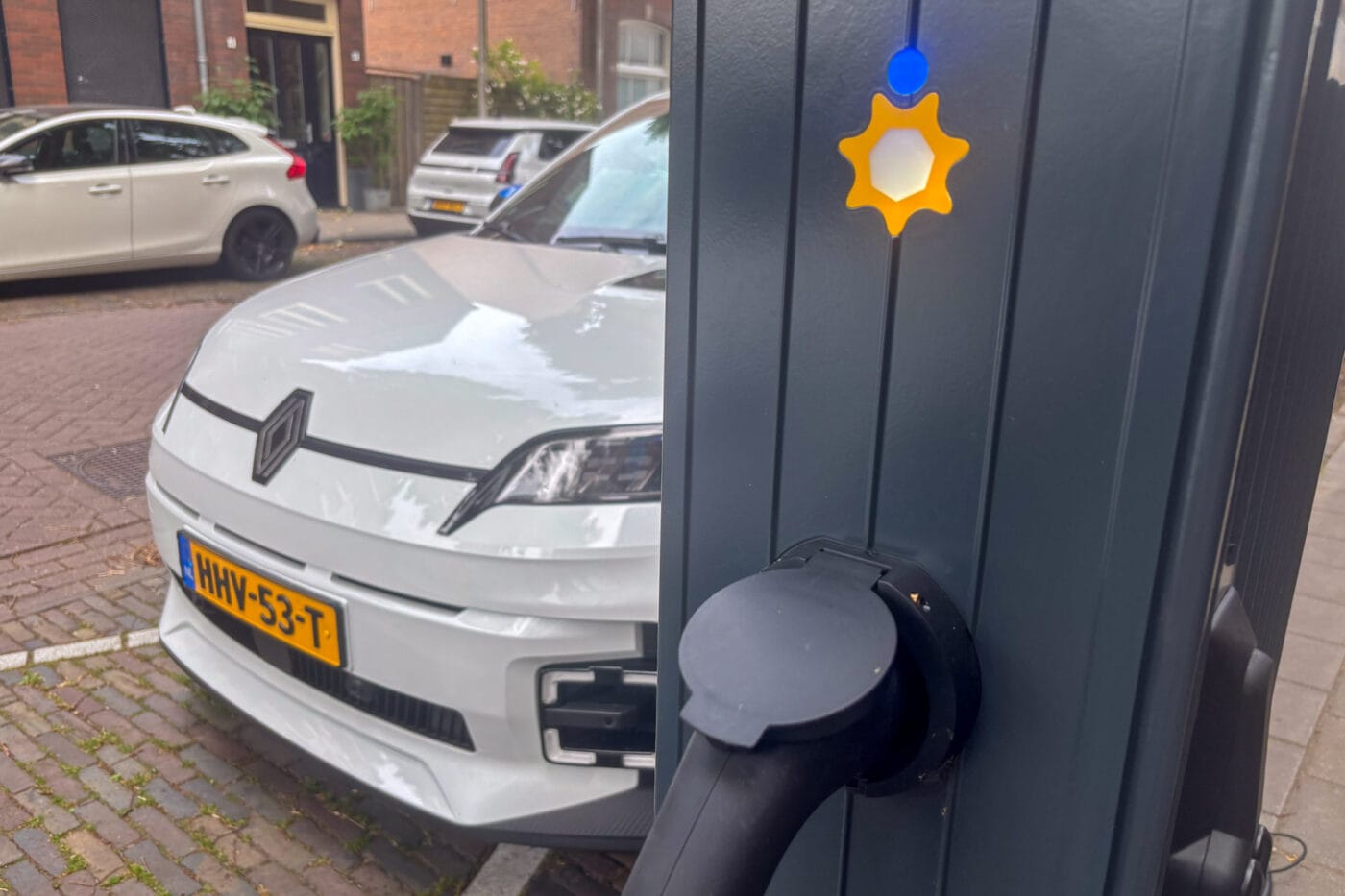
Once the peak demand eases, the software may recharge the battery using cheaper electricity, ensuring the car is ready for the next-day booking. It won’t aim for full charge immediately but will wait until morning solar production begins again. The battery is then charged as economically as possible so that it is fully charged by the next booking at 10 a.m.
If night-time renewable energy (e.g. wind) is abundant, the system may recharge overnight. There is no fixed schedule – it all depends on several factors. Berg reveals that “we typically use roughly ten to 20 kWh per vehicle for bidirectional operation, flexibly over day and night as required,” though exact thresholds and minimum reserves for MyWheels customers aren’t disclosed.
Bidirectional charging could make carsharing more affordable
According to MyWheels, cars are always fitted with the largest battery available – for the Renault 5, that’s the optional 52 kWh battery rather than the 40 kWh base model. A larger battery enhances both grid value and customer flexibility. If the car has been used to support the grid, and thus isn’t fully charged, the larger battery still offers several more kilometres of range.
At around €3,000 extra, the cost of the larger battery for MyWheels can be recouped through income generated by bidirectional charging. “Our aim with V2G is to make car-sharing cheaper,” stated MyWheels CEO Laurens van de Vijver. “In the first days of public use, we’ve already seen operational costs drop thanks to bidirectional charging.” He declined to share specific figures, noting it’s too early after just one week to draw firm conclusions.
As the real-world test progresses through various seasons – beyond this unusually sunny, dry May – it will generate hard data and insights. Early signals are promising, but scale should sharpen the picture further. Moreover, as the number of vehicles continues to rise, the significance of the data will also continue to improve.
Every project is its own case
All Utrecht Energized partners acknowledge that, however positive Utrecht’s results may be, these lessons cannot simply be transferred 1:1 to other V2G initiatives. For starters, the Netherlands has eight grid operators, with four major ones dominating the market. Every municipality sets its own rules for charge point infrastructure. MyWheels, which operates nationwide, must navigate different local regulations. In some cities, it secures exclusive bays, while in others it must operate under public concession schemes requiring open access.
Utrecht’s model relies on private infrastructure available only to its Renault 5 vehicles. Although these are charging stations in public spaces, they are exclusive. Only the bidirectional electric cars in the MyWheels fleet can charge at the special charging stations from We Drive Solar. Anyone who connects their own private Renault 5 to one of the stations will not be able to charge it there.
“To fully leverage V2G, we need to remove existing barriers – from adjusting tax rules and grid tariffs to promoting interoperability and simplifying certification,” says Mobilize’s Director of Energy, Jérôme Faton. “With the right framework, V2G can become a cornerstone of tomorrow’s electricity network.” Faton speaks for the Renault Group in calling for swift regulatory adaption.
Renault plans to expand V2G into Germany
Renault already offers bidirectional charging in France (for private owners of the Renault 5 E‑Tech) in partnership with The Mobility House. A Dutch private-customer V2G service is planned for launch in H1 2026. In France, annual customers covering 10,000 km reportedly save around €300. Given the Netherlands’ more strained grid, Faton believes savings will be even higher there.
“And that’s just the beginning – we have plans to roll out in Germany,” he told electrive. Germany, with more than 850 local grid operators, presents a far more fragmented market. A further hurdle is that Germany still lags in deploying smart meters – a fundamental enabler for V2G.
Faton is not yet ready to reveal exactly when the service will launch in Germany. As the Renault Group is committed to rapid deregulation, Faton encourages industry players to collaborate and ensure system interoperability. Regardless of how each project works in detail, the systems of several companies will always be required and interconnected.
One thing is certain: Renault will also rely on bidirectional charging with alternating current in Germany – the project in Sweden mentioned at the beginning, which uses Ambibox technology, is DC-based, and Volkswagen also relies on direct current for bidirectional charging of its MEB models.
Renault bets on AC technology
“We want to offer attractive solutions on price, and AC is the only way to deliver V2G at acceptable cost – at home or on a larger public scale,” explains Faton. “The Renault 5 is priced well below €30,000, and next year the Twingo will be available for around €20,000. We’re committed to making EVs affordable for a broader audience – including V2G. Expensive DC chargers don’t fit that approach, even if they’re technically interesting in niche cases. Our focus is rapid scaling via AC.”
Utrecht uses a purely AC solution – the same approach taken by We Drive Solar and Robin Berg. DC-based bidirectional charging may suit specific use cases (e.g. homes with rooftop PV, home battery and EV in a garage), where cost is secondary. But for large-scale adoption, AC prevails.
That requires the vehicle’s onboard charger – not the wallbox – to handle the conversion and include the necessary software. Critics argue that certifying a few DC wallboxes is easier for grid operators than handling the myriad onboard chargers across the EV market. Renault’s position in Utrecht is that commonality across vehicle platforms makes onboard certification feasible.
We Drive Solar had access to Renault’s onboard charger well ahead of the Renault 5 launch. Two years earlier, Berg and his team visited a Renault R&D centre to test protocols and compatibility. As the Renault 5 wasn’t yet available, they installed a bidirectional onboard charger in a Mégane E‑Tech and completed the test in just two hours – “because everything just worked,” reports Berg with satisfaction.
Then came the wait – for the production vehicle, for charging infrastructure, official approvals. “The idea and foundation have been in place for a long time. The wait was the hardest part,” said Berg. That wait is over – the operation has begun, and in Utrecht, the status LEDs are now spinning counter‑clockwise. A sign that electric cars are now helping to stabilise the local grid – and that the future of e‑mobility has truly begun.

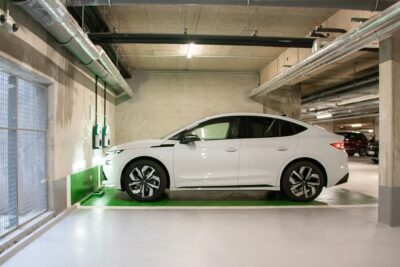
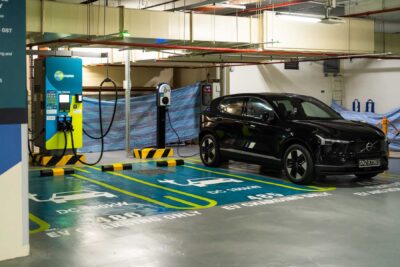
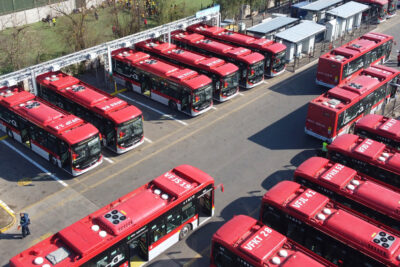
0 Comments